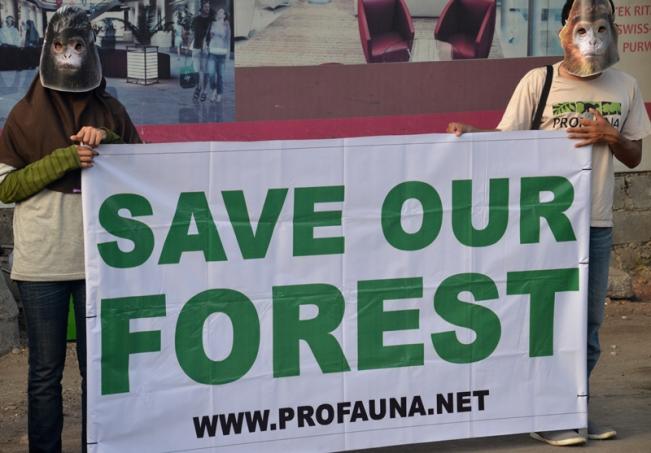Indonesia Loses Three Football Fields-Sized Forest Coverage per Minute
 Indonesia is rapidly losing itf natural forest coverage. During 2009-2013 Indonesia has lost 4,6 million hectares of forest, or as large as West Sumatra province, and it is 7 times of Jakarta's size.
Indonesia is rapidly losing itf natural forest coverage. During 2009-2013 Indonesia has lost 4,6 million hectares of forest, or as large as West Sumatra province, and it is 7 times of Jakarta's size.
Forest Watch Indonesia (FWI) unveiled the ugly fact in their latest book entitled Potret Keadaan Hutan Indonesia Periode 2009-2013 (The Portrait of Indonesia's Forest in 2009-2013), launched in Jakarta on 11 December 2014.
EG Togu Manurung, the head of FWI, claimed that during that period the rate of deforestation was massive. "Every minute, three football fields-sized forest coverage vanished," said he.
There is only 82 million hectares of forest remaining in Indonesia - 19,4 million hectares in Papua, 26,6 million hectares in Borneo, 11,4 million hectares in Sumatra, 8,9 million hectares in Sulawesi, 4,3 million hectares in Maluku, and 1,1 million hectares in Bali and Nusa Tenggara.
If the forestry management system is not altered and land clearing keeps happening, the forest coverage will shrink in no time. "We predict that in the next 10 years Riau will have lost all of its forest, followed by Central Borneo and Jambi," said Christian Purba, the Director of FWI.
Togu explained that the worse deforestation condition happens in Sumatra and Borneo, triggered mainly by palm oil plantation and mining industry.
However, forests in other places are facing similar threats. Some forests in Papua for example. "This must be prevented so that the deforestation pattern in the western region would not recur in the eastern region," added Togu.
Meanwhile, forests in small islands should also be maintained. Though the coverage might not be large, but these forests plays vital role in ensuring freshwater availability and also protect the environment from climate change.
To preserve Indonesia's remaining forest, Christian asserted that the government must improve the spatial planning, restrict permit issuance system, and strengthen the supervision. This surely requires good leadership from the government.
Forestry problems are inseparable from environmental corruption. Authorities accept douceurs to ease permit issuance. Corruption elicits overlapping hitches related to permit issuance and commercial land clearing.
Agreeing with Christian, a forestry expert from Bogor Agriculture Institute, Hariardi Kartodiharjo, also emphasizes the importance of improving management system. Laws and a number of planning, from moratorium up to REDD+, were appreciable steps. Yet, unruly field management system is still the biggest obstacle.
He regards that the unruly management system applied by the government, good program like moratorium keeps failing to protect our forest. Shockingly, data shows that most destruction takes place in the areas protected by the moratorium.
"500,000 hectares forest disappeared within the areas encompassed by the moratorium per year, while we also lost 200,000 hectares of natural forest and 400,000 of industrial forest. From that statistic we could say that the deforestation rate is much higher in the areas where moratorium is applied," Hariardi concluded.
Source: Kompas
